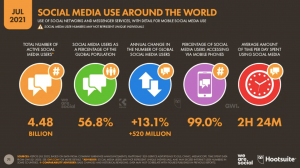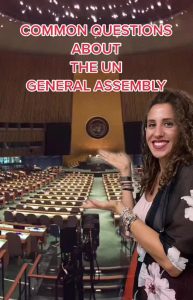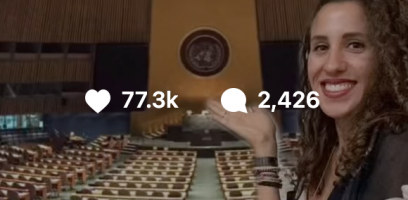In my last post I talked about the fast-changing nature of technologies and how the custom of socialising has mutated. Online communication is often creative and vibrant and people seem to enjoy interaction through new media. But what exactly is online communication?
Which communication is real communication?
When the study of the internet began people talked about two different worlds: the virtual and the real. It is now clear that there is not such distinction and online is just as real as offline (Miller et all, 2016). Although our lives comprise online and offline features that can be considered real, the way we communicate in these two realms often differs.
During the online conference Pandemocracy, Thomas Hylland Eriksen (2021) reminded us how communication in the modern era has become twofold with an online and offline type of communication taking place concurrently. Online we don’t communicate the way we do in real life, yet online communication has become just as significant as in-person communication.
The way we are perceived by the world is a combination of how we communicate in these two spheres, and this challenge is faced by individuals and organisations alike.
How to communicate online

Nowadays social media dominate the online sphere.
- Presence
Online communication needs to be on every platform, with the ambition of being on everybody’s screen on a daily basis;
- Consistency
The messages need to be aligned with organisational values and priorities, and sent out with the right tone for each platform;
- Shareability
The production of highly shareable contents is quintessential as this is, at current times, the highest form of engagement with an online audience that an organisation can aim to achieve.
In online communication different platforms have different audiences. The global head of digital engagement at Amnesty International, Valeriia Voshchevska (2021) reminds us that audience analysis is one of the crucial milestones in an online communication plan. Addressing each audience with a tailored message becomes the precondition for a successful campaign.
Whereas on certain platforms there is the obligation of keeping a more traditional format of communication, on others there is room for experimentation. Some platforms are widely populated by young audiences allowing organisations to express their personality differently. The ability of the communicator here is to find topics that break the algorithm and gear towards youth. Breaking free from traditional formats becomes critical and adding components such as innovation and humour can be the right step toward success. Experimenting is key.
Experimenting on social media: the UNGA dance
Tobias Denskus argues how the “connectivity of individuals by linking networks has the ability to spread information within minutes or even seconds, a phenomenon that lies at the heart of global social networking” (Denskus, 2013).
However, while aiming to go viral thanks to this element of shareability typical of the global social network, communicators need to strike a balance between maintaining corporate identity and engaging with new audiences.

In this regards, I would like to bring in a United Nation initiative launched a few weeks ago prior to the meeting of the United Nations General Assembly. The short video that aims to explain the main functions of the UNGA in a non-traditional way, perfectly illustrates this phenomenon of experimenting on new social media platforms.
However, the unorthodox video, which was made through the use of the ‘Questions I Get Asked’ trend on TikTok, received some strong criticisms from the web.
Click here to watch the video (🔊 on and feel free to dance along)
Share your thoughts:
Before further analysing the aftermaths of the campaign I would like to hear your opinion:
-
What do you think of the initiative?
-
Do you think it aligns with the 3 factors discussed by Licona?
-
Do you support it as a means to engage with young audiences?
Reference material:
-
Denskus, T. & Esser, D. 2013: Social Media and Global Development Rituals: a content analysis of blogs and tweets on the 2010 MDG Summit, Third World Quarterly 34:3, 409-424.
-
Eriksen, T. H. 2021: PANDEMOCRACY: Conviviality and everyday politics in times of crisis, Malmö, 15 September.
-
Licona, D. 2021:Social Media insights from IFRC & Amnesty International, Malmö, 23 October.
-
Miller, D., Costa, E. & Haynes, N. et al. 2016: How the world changed social media. London: UCL Press.
-
Voshchevska, V. 2021:Social Media insights from IFRC & Amnesty International, Malmö, 23 October.


